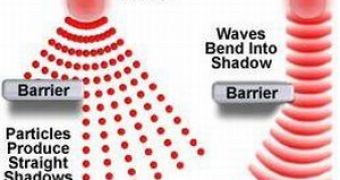For 80 years, the scientists have supported Niels Bohr's opinions stating that in any experiment, light shows only one aspect at a time, either a wave or a particle.
"Einstein was deeply troubled by that principle, since he could not accept that any external measurement would prevent light to reveal its full dual nature," said Shahriar S. Afshar, from Boston's Institute for Radiation-Induced Mass Studies (IRIMS) and a former visiting research professor at Rowan University.
He and a team of Rowan physics professors, Drs. Eduardo Flores and Ernst Knoesel, and student Keith McDonald, refuted this idea based on a series of experiments Afshar had conducted several years ago, pointing that quantum physics is incomplete.
The problem was that by destroying the photon to measure one of its aspects of it would leave no light to assess other aspect.
"About 150 years ago, light was thought to behave solely as a wave similar to sound and water waves. In 1905, Einstein observed that light might also act as being made out of small particles. Since then physicists found it difficult understanding the full nature of light since in some situations it acts like a particle and in others like a wave," said Flores. "This dual nature of light led to the insight that all fundamental physical objects include a wave and a particle aspect, even electrons, protons and students."
In 2004, Afshar said that he had developed an experiment that challenged Bohr's principle.
The experiments conducted by Rowan's team just validated Afshar's findings for single photons.
In the double-slit experiment, a laser beam hits a screen with two small pinholes and the light particle goes through one of the pinholes.
Through a system of lens, the light is then pictured onto two detectors, a certain detector measuring only the photons entered through a particular pinhole.
Because of its wave nature, light goes through both pinholes and realize an interference pattern, made of and dark fringes.
"Afshar's experiment consists of the clever idea of putting small absorbing wires at the exact position of the dark interference fringes, where you expect no light," Knoesel said.
"He then observed that the wires do not change the total light intensity, so there are really dark fringes at the position of the wires. That proves that light also behaves as a wave in the same experiment in which it behaves as a particle." he added.
"The important new contribution is that light carries both wave and particle aspects at all times, and future experiments will further clarify the nature of each component." Afshar said.
"It is interesting to note that even after 80 years we can still gain a better understanding about the nature of light using refined measurement techniques and creative ideas and therefore are able add to the vast insights of former scientists." continues Flores.

 14 DAY TRIAL //
14 DAY TRIAL //